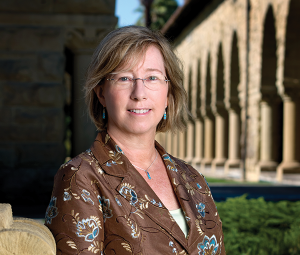Deep Storage and Greener Oil: An Interview with Sally Benson

Dr. Sally M. Benson is a professor of geosciences and director of the Global Climate and Energy Project at Stanford University. She coauthored a 2005 IPCC special report on carbon sequestration. Her current research interests include geologic storage of CO2 in deep underground formations, systems for a low-carbon future, and the influence of climate change on critical habitats.
The Humanist: Every approach to climate mitigation seems to have both known and unknown risks ahead. In your view, should we pursue carbon sequestration strategies? Should we go all out or should we be cautious? How do you weigh the risk of one against another?
Sally M. Benson: There are some actions that I would call no-brainers. So, for example, I think reforestation makes a huge amount of sense. There are a lot of benefits to having healthy forests. Carbon dioxide capture and storage in deep geologic formations is actually something we can do today; we have the technology and the risks are well understood. Numerous assessments have indicated that if we pick good sites, monitor carefully, and operate them so that the wells don’t leak, the retention will be essentially 100 percent. Permanently. So in the right location that’s a low-risk, high-reward strategy.
The Humanist: How common are those right locations?
Benson: Something like 60 percent of major point sources are within a reasonable distance of a storage site. If you look at the United States, the whole Gulf Coast has the capacity for carbon storage. If you draw a line from Texas through Wyoming that whole area has a lot of capacity. California has a lot of capacity. So do Europe, Russia, and the entire Middle East. But again, it’s a 10 to 15 percent solution.
The Humanist: A couple of years ago I did a story on geothermal generation using carbon dioxide as the heat transfer medium with the end of the cycle being carbon storage.
Benson: I’m very familiar with it. I put that in the category of a subset of the deep storage technologies. It’s very similar to enhanced oil recovery. If you take carbon dioxide and you pump it into the depleted oil reservoir, you can store a lot of CO2 and at the same time increase oil recovery. This could displace another source of oil such as oil sands, which is a more carbon-intensive source. So you’re producing what we might think of as a greener oil.
The Humanist: I hadn’t thought of it that way.
Benson: The geothermal application is basically the same. The goal would be to enhance extraction of heat from the ground by using CO2 instead of water as the working fluid. That’s a very new technology.
The Humanist: Climate change deniers often accuse scientists of pushing alarmism in order to advance their own funding and careers. So I want to ask you: If somebody waved a wand and took away the threat of climate change altogether would you be out of a job? Would you have nothing interesting left to research?
Benson: [laughter] No, of course not. I’m a geoscientist. I spent most of my career working in geothermal energy. That in and of itself is valuable whether or not we have a climate threat. I spent a long time working on groundwater pollution associated with agricultural practices. So, no, I and many other people have problems we can devote our fundamental scientific skills to solving, whether we’re geoscientists or climate scientists.
I think really it’s just the opposite. For those of us who work on these issues it’s depressing and frightening. To wake up every day working on such a challenging problem, knowing that we can do more, that we can go faster …that’s a difficult thing to deal with day in and day out. But that’s the reality that we’re living with.
